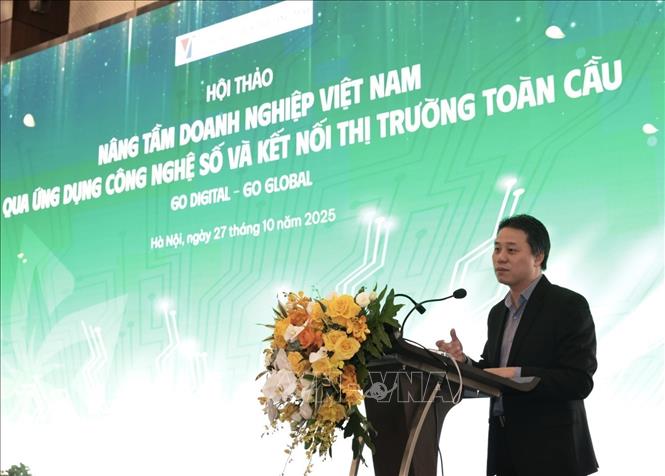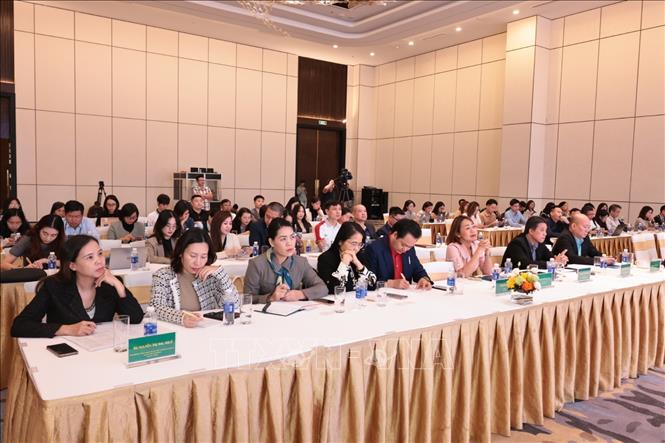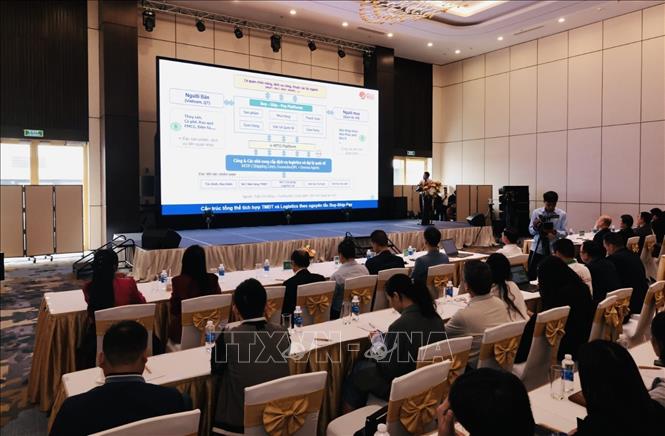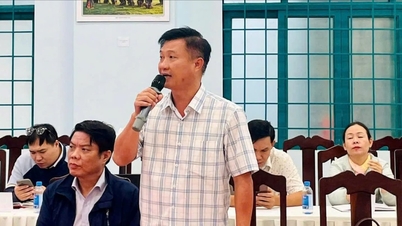
Speaking at the workshop, Mr. Vu Ba Phu, Director of the Trade Promotion Department ( Ministry of Industry and Trade ), said that in the context of globalization and the ongoing Fourth Industrial Revolution, digital transformation has become a key factor helping businesses enhance their competitiveness, expand their markets, and participate more deeply in the global value chain.
For Vietnam, digital technology and e-commerce are not just trends but have become new growth drivers for exports, helping Vietnamese businesses directly access global consumers, reduce intermediary costs, and increase brand value.
Recognizing this importance, the Trade Promotion Department has been implementing numerous programs to support businesses in applying digital technology in trade promotion and connecting with major e-commerce platforms both domestically and internationally.
According to Mr. Vu Ba Phu, this is one of the key activities in the "Go Digital – Go Global" program series spearheaded by the Trade Promotion Agency to support Vietnamese businesses on their journey of digital transformation and international integration. Through this, businesses are helped to find suitable paths to effectively apply digital technology in production, marketing, and sales; build reputable Vietnamese brands in domestic and international markets; and especially achieve sustainable development based on innovation and digital cooperation.
"The Trade Promotion Agency is always actively accompanying businesses, coordinating with domestic and foreign partners to expand the digital trade promotion network, train digital human resources, and build a smart export ecosystem, contributing to the national digital transformation goal and enhancing the position of Vietnamese goods in the global market," Mr. Vu Ba Phu emphasized.
Sharing his views on the opportunities and challenges for Vietnamese businesses in cross-border e-commerce, Mr. Bui Huy Hoang, Deputy Director of the Center for E-commerce and Digital Technology Development (Department of E-commerce and Digital Economy - Ministry of Industry and Trade), said that along with the development of e-commerce in general, cross-border e-commerce has also become a strong growth trend in the global market.

According to a report by Cognitive Market Research, the global cross-border e-commerce market size reached US$791.5 billion in 2024 and is projected to grow at an average annual rate of 30.50% between 2024 and 2031. Recognizing this potential, along with traditional export channels, many Vietnamese businesses have focused on developing strategies to apply cross-border e-commerce as a tool for market expansion.
In recent times, Vietnamese businesses have been expanding their online presence in many key markets such as the United States, China, the European Union (EU), Japan, and South Korea, while also seeking opportunities in new potential markets such as ASEAN, the Middle East, Russia, and Australia through cross-border e-commerce.
According to Mr. Bui Huy Hoang, e-commerce in general, and cross-border e-commerce in particular, has certain advantages over traditional business or import/export models due to its ability to quickly and widely access a large customer base from various markets around the world, opening up the possibility of accessing a huge market in a relatively short time (applying technology, AI, big data, etc.).
Unlike the traditional export model, which involves exporting through import partners in the importing country's market, cross-border trade, through various models, allows exporting businesses to not only directly access importing businesses but also the end consumers, directly interacting with customers to gather feedback in the most direct and timely manner.
Furthermore, it can help enhance product value, proactively promote brands, control sales policies, and optimize profits for export businesses or sellers. However, cross-border e-commerce also poses numerous challenges that Vietnamese export businesses and sellers must face and overcome.

For example, the e-commerce operational capacity of many Vietnamese businesses is still relatively limited, mainly due to insufficient investment in this business sector, especially in human resources for e-commerce. Furthermore, e-commerce revenue does not account for a significant portion of total sales for many businesses, so the focus on developing or allocating resources depends on the business's development strategy and the subjective will of its leadership.
Moreover, in this vast online environment, competition is extremely fierce. This includes competition from businesses in the same industry across numerous markets, competition from local businesses in the importing country, and competition in e-commerce operational capabilities. In particular, the operating costs of cross-border e-commerce are a significant challenge. Furthermore, understanding of the import market, legal regulations regarding e-commerce in each importing country, and consumer preferences vary, making it difficult for exporting businesses and sellers to accurately and thoroughly grasp the market.
Therefore, Mr. Bui Huy Hoang believes that businesses need to focus on selecting products that are suitable for each market and each consumer group in the target market. On the other hand, they should identify cross-border trade models (B2B, B2C, B2B2C, D2C, etc.) and concentrate investment resources on this e-commerce business model.
Furthermore, focus on developing human resources for e-commerce in general, as well as for cross-border e-commerce. Strengthen cooperation with e-commerce partners in importing countries will, on the one hand, help save costs, and on the other hand, allow for a faster understanding of market needs.
At the workshop, delegates focused on discussing topics relevant to the needs of the Vietnamese business community, such as trends in applying digital technology in global trade promotion; opportunities and challenges for Vietnamese businesses in cross-border e-commerce; connecting domestic producers with consumers; and online trade platforms for Vietnamese export businesses.
In addition to expert presentations, the workshop also included a direct consultation area where businesses received specific guidance on strategies and methods for participating in e-commerce platforms, as well as access to support programs from the Ministry of Industry and Trade in digital transformation.
Source: https://baotintuc.vn/kinh-te/hoi-cho-mua-thu-2025-day-manh-chuyen-doi-so-va-ket-noi-toan-cau-20251027173905073.htm














































































































Comment (0)